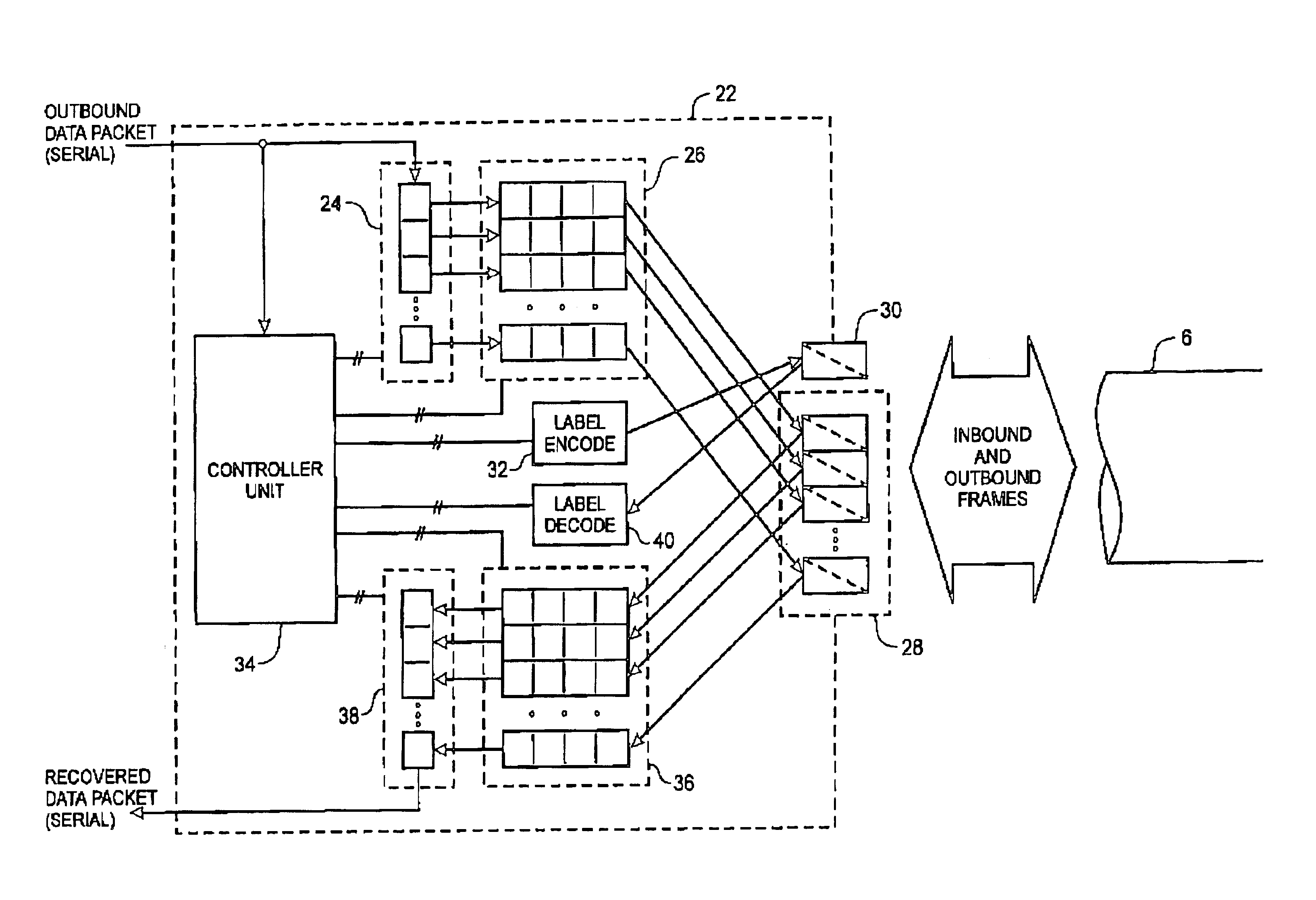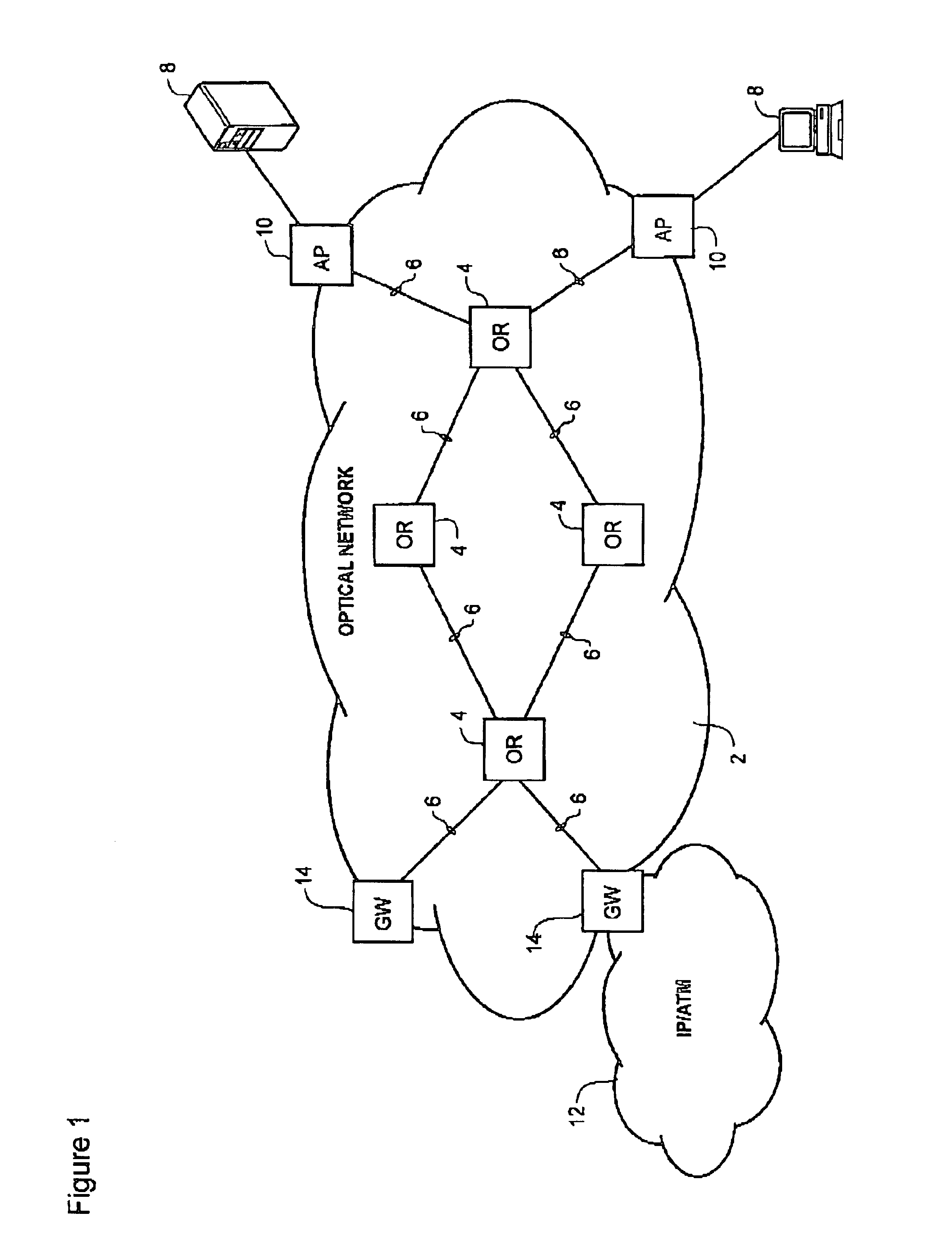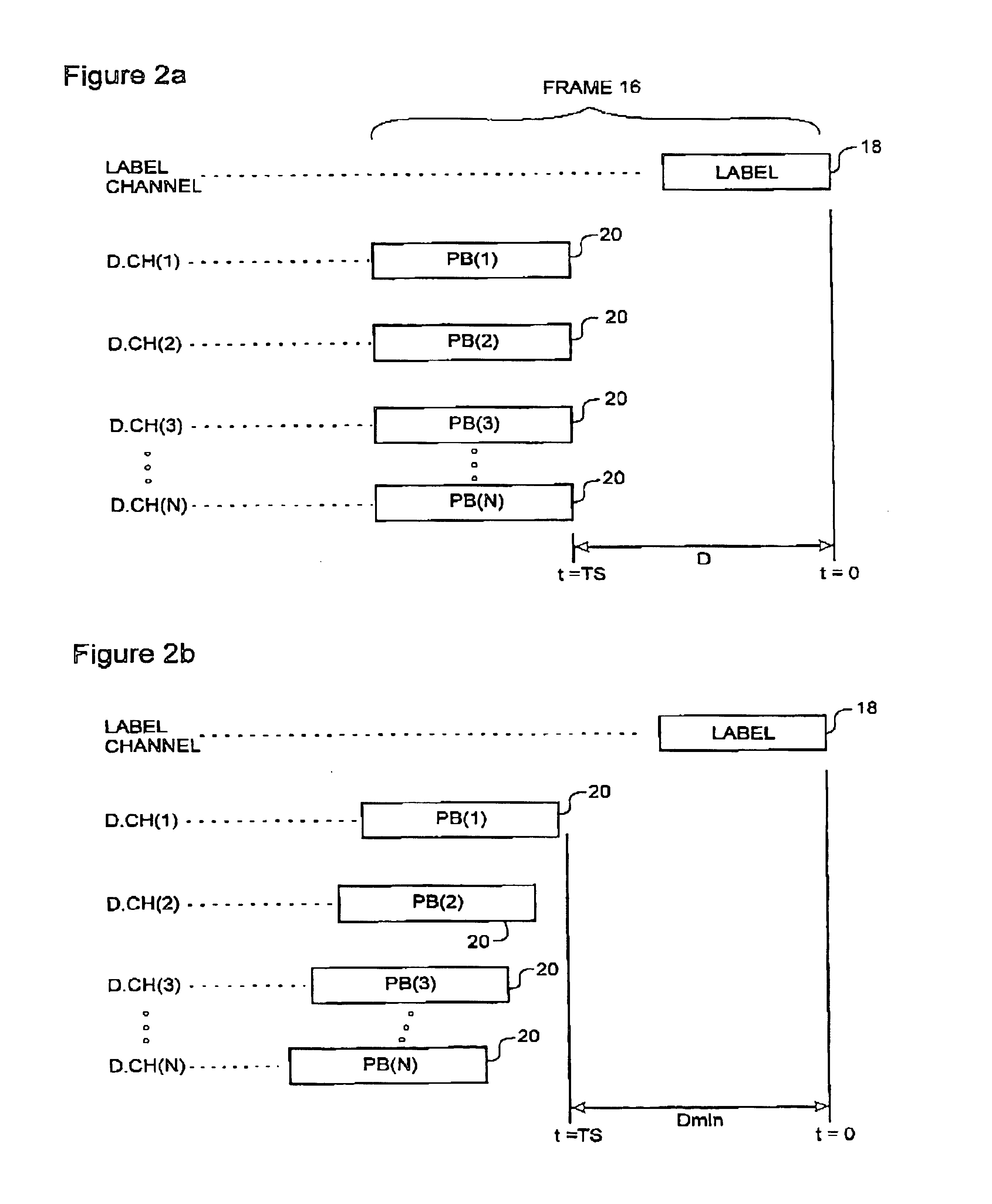Method and system for optical routing of variable-length packet data
a variable-length packet data and optical routing technology, applied in the field of optical communication networks, can solve the problems of limiting the overall bandwidth capacity of the network, limiting the amount of delay, and limiting the ring for delaying and buffering optical signals, so as to facilitate full optical routing of ip packets
- Summary
- Abstract
- Description
- Claims
- Application Information
AI Technical Summary
Benefits of technology
Problems solved by technology
Method used
Image
Examples
Embodiment Construction
The present invention provides a system for fully optical routing of variable length packetized data traffic, for example internet protocol (IP) packets and / or asynchronous transfer mode (ATM) frames across an optical network. AS shown in FIG. 1, an optical network 2 usable in conjunction with the present invention generally comprises a plurality of optical routers 4 (four are shown in FIG. 1) interconnected by fiber optic links 6. Communications devices 8, for example end user personal computers (PCs) or local area network (LAN) servers may be connected to the optical network 2 via one or more access points 10. The optical network 2 may also be connected to one or more federated networks 12, for example an ATM or an IP network, through a respective gateway 14. Within the optical network 2, each of the optical routers 4 is configured for wave division multiplex (WDM) and / or dense wave division multiplex (DWDM) transport of packet data traffic as will be described in greater detail b...
PUM
 Login to View More
Login to View More Abstract
Description
Claims
Application Information
 Login to View More
Login to View More - R&D
- Intellectual Property
- Life Sciences
- Materials
- Tech Scout
- Unparalleled Data Quality
- Higher Quality Content
- 60% Fewer Hallucinations
Browse by: Latest US Patents, China's latest patents, Technical Efficacy Thesaurus, Application Domain, Technology Topic, Popular Technical Reports.
© 2025 PatSnap. All rights reserved.Legal|Privacy policy|Modern Slavery Act Transparency Statement|Sitemap|About US| Contact US: help@patsnap.com



